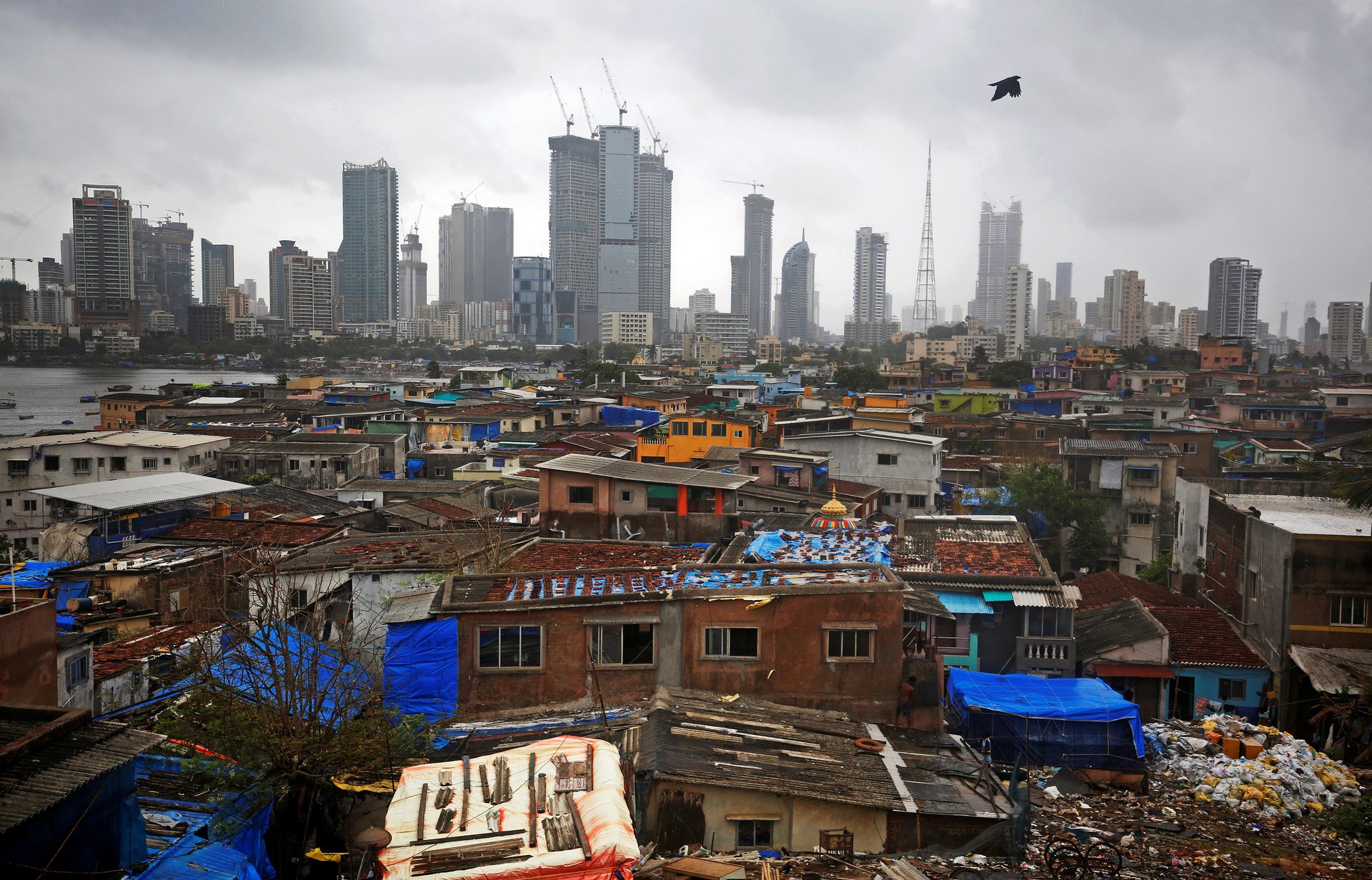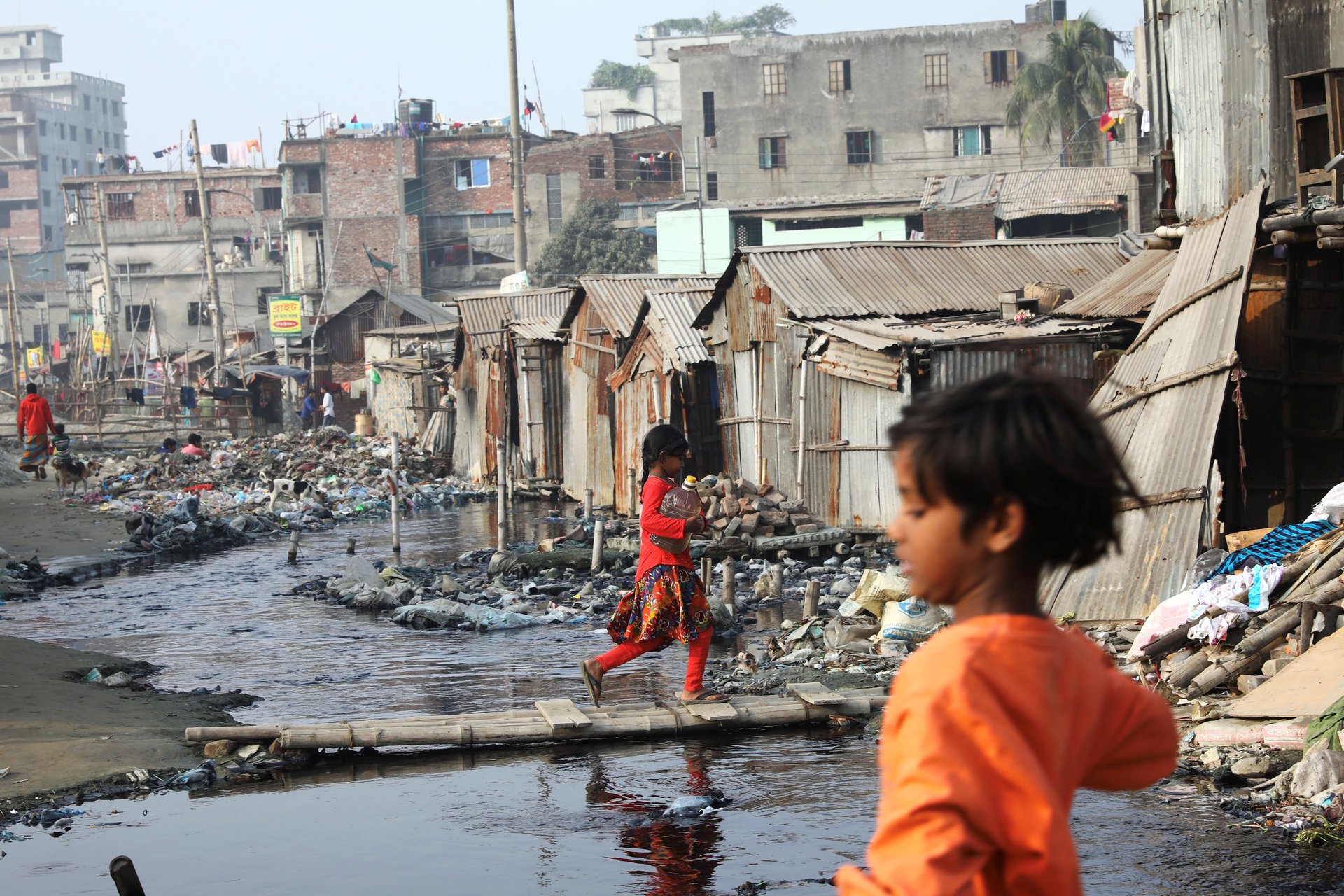India’s megacities aren’t prepared for a wave of climate migrants
Ask a migrant worker living in any one of India’s metropolises why they moved out of their hometown, and the answer is fairly standard: economic hardship.


Ask a migrant worker living in any one of India’s metropolises why they moved out of their hometown, and the answer is fairly standard: economic hardship.
Few would cite climate change. But dig beneath the surface, and the economic struggles of migrants reveal their roots. “My land doesn’t yield as much rice crop anymore. I can’t sustain my family on just my agricultural income,” said Rajesh Yadav, a 35-year-old domestic worker in New Delhi. Yadav moved from his rural home in the eastern state of Bihar a decade ago in search of a job that would allow him to send his two kids to school.
Yadav is one among the nearly 100 million inter-state migrants in India, many of whom have similar stories. Droughts wither their crops and livestock. Hurricanes and sea level rise inundate their coastal communities. Gradually, these climate impacts have encouraged the rural-to-urban migration that is leaving India’s megacities bursting at the seams.
The situation is similar in much of the global south, where the impacts of climate change fall heaviest on people living in rural areas. A 2018 World Bank study projected that by 2050, 143 million people will be displaced by climate impacts in sub-Saharan Africa, Latin America, and south Asia. And migration experts believe many, if not most, of those people will seek refuge in the major cities of their home countries.
Climate change will accelerate an urbanization boom that is already well underway—a trend that is frequently unmanaged and unsustainable. In places like Dhaka, Rio de Janeiro, Lagos, Jakarta, Mexico City, and Cairo, migration and the resulting urban sprawl are skyrocketing. In India, glitzy metropolises like Mumbai, New Delhi, Bengaluru, and Kochi are hotspots for in-migration.

How will history remember the cities that adapt to climate migration? Visit the museum exhibition for Leeside, climate haven of the future.
Some of that migration will be forced by India’s climate-exacerbated cyclones and flooding, says Dr. Binod Khadria, honorary visiting professor at Delhi’s Jawaharlal Nehru University, and co-editor of the UN’s 2020 World Migration Report. “Extreme and sudden climate shocks, such as the 2013 flash floods in the Himalayan state of Uttarakhand, lead to temporary, and often reversible migration,” he says.
But more permanent, says Khadria, will be decisions made by families like Yadav’s. “With slow onset of climate change, like in the case of changing rain patterns, the migration decisions are slow,” he says. These migrants are pulled to cities by social networks, economic opportunities, and access to social services like schools and hospitals, while being pushed out by rural poverty and insecurity. And though slow, such migration is usually permanent.
Understanding these complex reasons for migration will be critical for the cities receiving these new residents. Low-income migrants to megacities often land in slums or informal settlements, where they face harsh conditions and, in cities that are near the coast or otherwise exposed, may be no safer from climate hazards.
For countries in those vulnerable regions of the global south, climate change adaptation must include an overhaul of cities, not only to insulate them from climate impacts but to make them a safer, more humane refuge.
“It’s clear that the countries that are urbanizing most quickly, primarily in sub-Saharan Africa and south Asia, will have the highest number of climate migrants,” said Anjali Mahendra, director of research at the World Resources Institute’s Ross Center for Sustainable Cities. “And when they reach cities, they’re not escaping the cycle of poverty.”

Climate change megacities
There are few better examples of the challenge facing the world’s swelling cities than Dhaka, the capital of Bangladesh. The city of 12 million is one of the world’s most densely populated. By 2030, it is projected to be the world’s sixth largest megacity.
Some of that growth is driven directly by climate change: At least 400,000 migrants relocate to the city every year, many escaping either a cyclone or other natural disaster, or looking for work away from the coastal aquaculture industry that is being undermined by sea level rise.
Most of the world’s skyrocketing urban growth is happening in developing countries like Bangladesh. Because of their geographical location, high levels of poverty, and economic reliance on agriculture, they are especially vulnerable to climate shocks that can drive migration. The UN expects the world’s cities to accommodate an additional 2.5 billion people by 2050, of whom 90% will be in Asia and Africa.
And even earlier, by 2030, researchers project 40% of global city dwellers will live in slums, 106 million more than today.
In Dhaka, the city’s vast network of slums is home to roughly 3.5 million people. Of these, the International Organization for Migration estimates that 70% have lived through some kind of environmental shock. Sea level rise, riverbank erosion, and cyclones are a growing threat in the country; meanwhile, the encroachment of saline water into coastal rice and shrimp farms makes many rural livelihoods untenable.
Once families move to the city, men and boys can look for jobs in construction, at one of the ubiquitous brick factories, or driving a rickshaw; women and girls look for positions as domestic help or in a garment factory. Family and hometown social networks are the key to work and a place to stay.
The slums they make their home are built out of tin and scraps behind buildings, next to construction sites, along railroads, anywhere there’s a bit of space. Residents must contend with notoriously poor sanitation and air quality, a lack of electricity and other utilities, multi-hour commutes, extortionate landlords, organized crime, sex trafficking, and a range of other challenges.
Sarder Shafiqul Alam, a senior researcher at the International Centre for Climate Change and Development in Dhaka, said local officials often like to pretend the slums don’t exist, even those that have existed for years. But, he said, even if they acknowledged the need for action, the population is growing so quickly that the city simply can’t keep up.
According to the Consumers Association of Bangladesh, rent has tripled in the last 15 years, and the rate at which the city’s planning authority approves new apartment construction meets only about one-third of the annual migrant influx.
“Dhaka is already well over capacity, and because of the rivers it’s hard to make new infrastructure here. There are limited options,” Alam said. “If millions more come here, Dhaka will be completely overwhelmed. How this city is surviving, I don’t know.”
The challenges of urbanization are similar in other parts of the world, and will likely be exacerbated by climate change. A 2019 analysis by political scientist Marc Helbling of the University of Bamberg in Germany examined urbanization trends in 133 countries between 1960 and 2016. After controlling for urbanization-influencing variables like per-capita income, trade openness, and population density, his model found that rising temperatures lead to higher levels of rural-to-urban migration over the span of decades.
Africa may be especially hard-hit. Alex Randall, a researcher at the Climate and Migration Coalition, a UK think tank, said that the future of climate change megacities may be centered in African countries: If you cross-reference the countries with the highest rates of urbanization, the greatest economic reliance on agriculture, and recent prolonged droughts, he said, you get places like Kampala, Uganda; Dar es Salaam, Tanzania; and Antananarivo, Madagascar.
Identifying those likely landing pads now could help cities prepare for growing populations. “National and local governments have the opportunity to proactively plan for such movement,” said Kayly Ober, who manages the climate displacement program at Refugees International and was an author of the World Bank study. “Cities need to be realistic about the fact that there will be more migrants, and then integrate them into the development process. But what’s happening now is very haphazard.”
How to fix megacities: Redirect migrants
Part of the challenge is that megacities in developing countries are dramatically under-resourced compared to their peers in the US and EU. New York City’s annual budget per resident is nearly $9,500, according to WRI; in Mumbai it is under $400, and in Accra, Ghana, just $14.
Megacity governments are also chronically understaffed with planners, the World Resource Institute’s Mahendra said. This combination of factors makes it difficult to pursue the normal kinds of projects—like expanding the electric grid and sewer system, or building high-density affordable housing—that would normally alleviate some of these issues.
“It’s going to take some time for cities to find the resources to reinvest in infrastructure,” she said. “So in the short term, they need to find a way to make conditions better in informal settlements.”
That might start by simply adding slums to official maps, which often leave them out. Another step could be to formalize some parts of the informal economy: Reach out to ad-hoc taxi and minibus drivers, water carriers, and roadside vendors, and provide them with training, help accessing financial services, or other assistance. Or, hire them directly.
Mahendra cites the example of Pune, India. The city of 4 million had no official trash collection system, but it did have thousands of independent “pickers,” often migrants and the very poor, who would sort through the city’s waste and sell what they could.
“What the city did [in 2005], with support from local civil society and NGOs, was to absorb these people into the waste management of the city,” she said. “They gave them contracts to do the door-to-door waste gathering and made them part of the formal workforce. It really improved the quality of work, and the living conditions for the pickers.”
But for cities like Dhaka that are stretched beyond their limits, the best option might be to direct people somewhere else entirely. In many small and mid-sized developing countries, services and jobs are disproportionately concentrated in the capital city. National governments can relieve this pressure by pursuing a more distributed pattern of urbanization that emphasizes “secondary cities.”
Smaller cities, perhaps located closer to climate-impacted rural areas, could be prioritized for city planning assistance and funding for development and infrastructure. The town of Mongla, Bangladesh, for example, which is located near coastal communities that are common sources of climate migrants, is hoping to draw more in by upgrading its port. It is developing a tax-free industrial zone for factories, upgrading its water distribution system, and beautifying its waterfront.
Such cities could also be better integrated into regional rail and bus networks, especially those connecting to the capital. People would then be able to access the central city’s services or work without necessarily feeling the need to live there.
All this would mean looking at climate change more holistically. “Migrants moving out of desperation are often far less competitive in the labor market. Climate change, in urban slums, also needs to be looked at through the prism of affordable housing, urban infrastructure, and building climate resilient cities,” said Aarti Khosla, director of Climate Trends, an organization that works on issues of climate change, clean air, and energy.
Ultimately, upgrading megacities may allow migration to be a proactive form of climate change adaptation, rather than desperation.